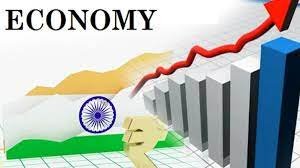India to Surpass Japan in 2030 to Become 2nd Largest Economy of Asia, says S&P Global
India’s economic growth trajectory is poised for a significant shift as per a recent report by S&P Global. The report suggests that India is on track to overtake Japan and become the second-largest economy in Asia by the year 2030. This forecast has significant implications for various government job aspirants, including those preparing for positions in teaching, policing, banking, railways, defense, and civil services like PSCS to IAS.
This remarkable development is a result of India’s consistent economic growth and the potential it holds for the coming years. The report indicates several key factors contributing to this shift, including India’s young demographic dividend, growing urbanization, and the continuous efforts to improve infrastructure and industries.

Why this News is Important
1. Economic and Government Job Opportunities: The news is of paramount importance for students preparing for government exams as a surging economy often leads to increased job opportunities in various sectors, such as teaching, police, banking, railways, defense, and civil services.
2. Strategic Implications: This shift in economic ranking is crucial on a global scale as India’s influence in the Asian region is set to grow, impacting diplomatic and strategic considerations.
3. Economic Policies and Reforms: As India strives to reach the second-largest economy status, it’s likely to implement various economic policies and reforms, which government job aspirants need to be aware of.
Historical Context
To understand the significance of this news, it’s vital to consider the historical context. Over the past few decades, India has made substantial progress in economic development. Starting with economic liberalization in 1991, India has seen consistent growth, attracting global investment and improving various sectors. The “Make in India” campaign and the implementation of the Goods and Services Tax (GST) have further contributed to economic growth.
Key Takeaways from “India to Surpass Japan in 2030 to Become 2nd Largest Economy of Asia, says S&P Global”
| Serial Number | Key Takeaway |
|---|---|
| 1. | India is projected to become Asia’s second-largest economy by 2030, surpassing Japan. |
| 2. | This development has significant implications for government job aspirants, opening up diverse career opportunities. |
| 3. | India’s economic progress is a result of consistent growth, demographic dividend, and infrastructure development. |
| 4. | Historical context includes economic liberalization, “Make in India,” and GST implementation. |
| 5. | As India’s economy grows, students should stay updated on economic policies and reforms that may affect government sectors. |
Important FAQs for Students from this News
Q: How is India projected to overtake Japan as Asia’s second-largest economy by 2030 important for government job aspirants?
A: This projection is significant for job aspirants as it indicates potential growth in government job opportunities due to India’s economic surge.
Q: What are the key factors contributing to India’s economic growth, as mentioned in the article?
A: The key factors include India’s young demographic dividend, urbanization, and efforts to enhance infrastructure and industries.
Q: What historical events have led to India’s economic growth, as mentioned in the article’s historical context?
A: Economic liberalization in 1991, “Make in India” campaign, and GST implementation have significantly contributed to India’s economic development.
Q: How can government job aspirants benefit from staying updated on India’s economic policies and reforms?
A: Staying informed about economic policies and reforms is essential for aspirants as these changes can impact various government sectors and job requirements.
Q: What should government job aspirants focus on to prepare for exams related to India’s economic growth and its implications?
A: Aspirants should focus on understanding the historical context, key takeaways, and the broader implications of India’s economic growth, as highlighted in the article.
Some Important Current Affairs Links


















